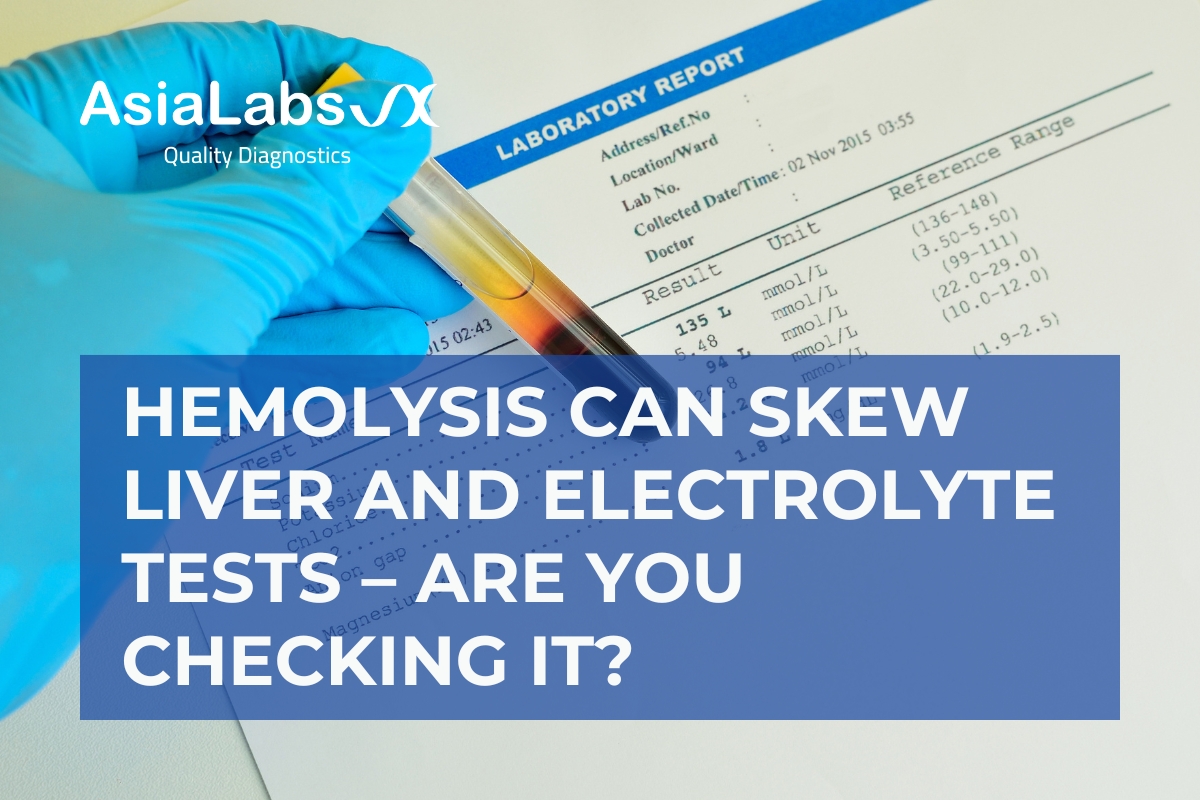When a patient’s lab results return with a mildly elevated AST or an unexpectedly high potassium, the immediate question is: Is this a sign of underlying pathology, or simply the result of a compromised blood sample? The answer is not always straightforward. One of the most overlooked factors in laboratory medicine is hemolysis—the rupture of red blood cells during or after blood collection. Even mild hemolysis can significantly distort results, leading to misinterpretation, unnecessary treatments, and patient anxiety.
What Is Hemolysis and Why Does It Matter?
Hemolysis occurs when red blood cells break apart, releasing their contents—including hemoglobin, potassium, AST (aspartate aminotransferase), and LDH (lactate dehydrogenase)—into the plasma or serum. This can happen for a variety of reasons: a difficult blood draw, improper handling, or even excessive force during sample transport. While gross hemolysis is often visible as a pink or red tinge in the sample, mild hemolysis may not be detectable by the naked eye.
The clinical consequences of hemolysis are profound. When red blood cells rupture, they release substances that can artificially inflate or depress certain lab values:
-
AST and LDH: Both are found in high concentrations inside red blood cells. Hemolysis can cause falsely elevated readings, potentially mimicking liver injury or muscle breakdown.
-
Potassium: Red blood cells contain much more potassium than plasma. Hemolysis can lead to spurious hyperkalemia, which, if misinterpreted, may result in unnecessary and potentially dangerous interventions.
-
Sodium: Conversely, hemolysis can cause a dilutional effect, leading to falsely low sodium levels.
The Hidden Impact on Diagnosis and Treatment
The implications of unrecognized hemolysis are not trivial. Consider these scenarios:
-
Misdiagnosis of Hepatitis: A patient presents with fatigue and mild jaundice. Their AST is elevated, but the sample was hemolyzed. Without recognizing the interference, the clinician may diagnose hepatitis and begin an unnecessary workup or treatment.
-
Unwarranted Hyperkalemia Management: Another patient’s potassium is flagged as dangerously high. If hemolysis is the cause, aggressive potassium-lowering therapies could actually harm the patient, whose true potassium level is normal.
-
Repeat Blood Draws: If hemolysis is suspected after the fact, patients may be called back for repeat testing, causing inconvenience, anxiety, and additional costs.
How Hemolysis Is Detected
Many laboratories still rely on visual inspection to detect hemolysis, but this method is subjective and often misses mild cases. At AsiaLabs, we employ optical index detection—a sensitive, automated method that quantifies the degree of hemolysis in every sample. This approach provides an objective hemolysis index, which is reported alongside key test results, including ALT, AST, and electrolyte panels.
What We Do Differently at AsiaLabs
-
Automated Screening: Every blood sample is screened for hemolysis using state-of-the-art optical analyzers.
-
Transparent Reporting: If hemolysis is detected at a level that could interfere with test results, the affected values are clearly flagged in the report.
-
Hemolysis Index Included: We report a numerical hemolysis index with all relevant panels, giving clinicians a clear indication of sample quality.
-
Actionable Alerts: When interference is likely to impact clinical interpretation, our reports provide specific guidance, such as recommending a redraw or cautioning against over-interpretation.
The Benefits for Clinicians and Patients
By systematically screening for and reporting hemolysis, AsiaLabs helps clinicians avoid common pitfalls:
-
Preventing Misdiagnosis: Knowing when a result may be artifact prevents unnecessary workups for liver disease or muscle injury.
-
Avoiding Unnecessary Treatment: Physicians can confidently distinguish true hyperkalemia from a lab artifact, reducing the risk of inappropriate interventions.
-
Reducing Patient Anxiety: Clear, accurate results minimize the need for repeat testing and the stress that comes with ambiguous or alarming lab reports.
-
Supporting Evidence-Based Care: With full transparency about sample quality, clinicians can make better-informed decisions, improving patient outcomes.
Why Hemolysis Often Goes Unnoticed
Despite its significance, hemolysis is frequently overlooked in routine practice. Mild hemolysis may not change the appearance of the sample, and busy laboratories may not have robust protocols for detection and reporting. As a result, clinicians may unknowingly base important decisions on compromised data.
At AsiaLabs, we believe that every result should be trustworthy. That’s why our commitment to quality includes not just advanced testing technology, but also rigorous pre-analytical controls and transparent communication. We ensure that you’re not treating an artifact, but making decisions based on accurate, reliable information.
Don’t Let Hemolysis Cloud Your Clinical Judgment
In the world of laboratory medicine, small details can have big consequences. Hemolysis is a classic example: a subtle, often invisible factor that can dramatically skew liver and electrolyte tests. By choosing a laboratory partner like AsiaLabs, which prioritizes hemolysis detection and transparent reporting, clinicians can protect their patients from misdiagnosis, unnecessary treatment, and avoidable anxiety.
Next time you review a lab report with an unexpected result, ask yourself: Was hemolysis checked? With AsiaLabs, you’ll always have the answer—and the confidence that comes with it.

